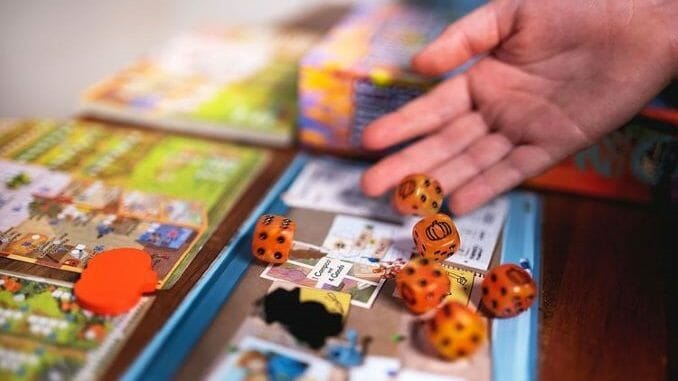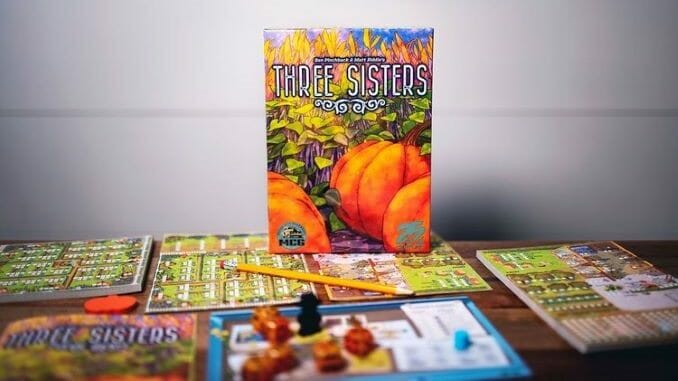We’ve Fallen in Love with the Fantastic New Board Game Three Sisters
Photos courtesy of 25th Century Games
Three Sisters is a new roll-and-write from the designers of Fleet: The Dice Game, and it is utterly fantastic. Based on the companion planting technique that indigenous peoples in the Americas have used for several thousand years, the game has a brilliantly complex system of interconnected rewards and bonuses that makes for an intellectual puzzle I wanted to play again and again.
The “three sisters” technique involves growing corn, beans, and squash together for their symbiotic relationship in the field. Corn stalks give beans natural trellises to climb, beans fix nitrogen in the soil, and squash provides natural ground cover to reduce evaporation and prevent weed growth, while all three crops, consumed together, provide all nine essential amino acids that humans can’t produce for themselves. Matt Riddle and Ben Pinchback, the designers of Three Sisters, also worked with two indigenous advisers who read the game’s rules and reviewed its art to ensure they used the theme and topic with respect, without cultural appropriation.
In Three Sisters, players have two scoresheets that they’ll mark up over the course of the game, one of which shows the player’s garden, with six zones, and six different perennial flowers beneath them, while the other shows the player’s shed, apiary, fruit trees, compost bin, and the generic “goods” section that matters a lot more than the name implies. The start player for each round rolls the dice, two more than the player count, grouping them by value (one through six, with the one’s single pip replaced by the image of a pumpkin) and places them on the rondel on the small, central board. Players then go in turn, selecting one die and taking two actions based on the die’s value and the space on which it was resting, after which all players use the lowest remaining die for two more actions, again based on the die’s value and location.
The first action, based on the value of the die, is a Plant or Water action: You may start two new plants in the zone in your garden matching that die’s value, or you may water all plants in that zone. Each zone has some number of corn, bean, and squash plants within it. Corn plants are four spaces tall, while their adjacent bean plants are two spaces tall. When you complete a corn plant, checking off all four spaces, you get three victory points; once you’ve completed the second box of a corn plant, you can start the bean plant, which is worth one point when finished. The squash plants vary in size, but when completed, you get one to three goods (not points), and if you finish two adjacent pumpkins, you also check off the perennial flower space between them and fill in a space in that flower’s column at the bottom.
Then you do the second action, based on the space underneath the die. These can involve a free Plant/Water action, checking off a space in your Shed, checking off a space in your Apiary or on a Fruit tree, gaining a compost and four goods, or visiting the Farmer’s Market. The Shed has a dozen items you can complete that give you ongoing benefits, or regular bonuses, or game-end points bonuses. The Apiary and Fruit, like the Perennials, can do the same, with increasing benefits as you go. The Farmer’s Market gives you benefits based on how many goods you’ve gathered, marking off more perennial and maybe fruit spaces.

-

-

-

-

-

-

-

-

-

-

-

-

-

-

-

-

-

-

-

-

-

-

-

-

-

-

-

-

-

-

-

-

-

-

-

-

-

-

-

-








































